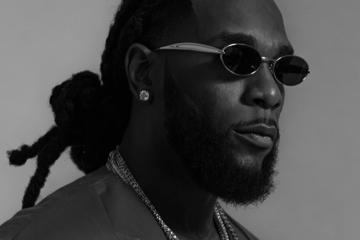Jurassic World Is Pure Popcorn-Movie Spectacle
"It feels perfectly adequate, but nothing more: delivering the bigger, louder, scarier, cooler, more totally extreme dinosaurs/destruction that audiences demand."
“Let’s be honest: no one’s impressed by a Dinosaur anymore,” says Bryce Dallas Howard, the unlikely heroine of Jurassic World, playing a buzzword-spouting corporate manager who introduces the self-aware essence of this fourth CGI-dinosaur movie. 20 years ago, Howard says, dinosaurs were magical, but now jaded theme-park tourists are bored with your regular old towering-leviathans-brought-back-to-life-after-millions-of-years-of-extinction. Like rollercoasters, they need to get bigger, faster, louder, scarier, more totally extreme; the marketplace demanding the periodic unveiling of new ‘attractions’ to keep interest robust.
She’s reading from a screenplay — by Safety Not Guaranteed collaborators Colin Trevorrow and Derek Connolly, and Planet Of The Apes re-booters Rick Jaffa and Amanda Silver — that’s not merely about the world within the Jurassic Park franchise, but the franchise itself as piece of intellectual property; what it means to be a branded name competing in the contemporary marketplace of millennial Hollywood.
Where simply showing CGI dinosaurs on the silver-screen once filled audiences with Spielbergian delight, now the revived Jurassic Park — in its first film since 2001’s Jurassic Park III — must cater to the voracious appetites of blockbuster consumers. And they’ve grown just as jaded as fictitious theme-park gawpers, demanding more explosions, more destruction, and bigger monsters to get them to look up from their phones. And, so, the dinosaurs populating this new Jurassic World — the all-new theme-park built on the bones of the destroyed original — are genetically-constructed ‘assets’ waiting to be super-sized, preferably at the cost of a corporate sponsor.
With that brisk bit of corporate-funded-mad-science-as-Hollywood-commentary introduction, Trevorrow, the unexpected director of Jurassic World, soon gives us the ironic angle on this bigger, faster, louder, scarier, more totally extreme dinosaur movie: Verizon Wireless Presents The Indominus Rex. The new star attraction of the theme-part/franchise is a Frankensteinian kaiju created in unholy test-tubes, where Playing-God B.D. Wong splices theropod DNA with crustacean and chameleon, and anything else to live up to the corporate-memo edict of ‘cooler’.
Don't miss a beat with our FREE daily newsletter
The cast are instantly divided into easy-to-remember ranks: the morally-opposed, who deserve to live (Chris Pratt and Omar Sy as raptor trainers demanding dignity for dinosaurs, Jake Johnson the retro-Jurassic -Park-lovin' hipster-nerd); and the morally-corrupted, who deserve to die (Wong the mad scientist, Irrfan Khan the park-owner, Vincent D’Onofrio the private security contractor who wants to militarise dinosaurs).
Given the ironic central angle and Trevorrow and Connolly’s indie-movie background, most of the dialogue from either side is expository and banal. Sy literally says “these people never learn!” “Progress always wins!” glowers D’Onofrio, to which Pratt —displaying none of his Star Lord wit — retorts “Maybe progress should lose for once!”
The one-liners are just as unmemorable when Pratt and Howard play out a low-watt version of the adventurer-alpha-male/uptight-dame clash Indiana Jones, sparks failing to fly as their sexual tension remains slack. Pratt is the nominal ‘hero’ of the piece — and the star of the marketing campaign — but Howard is the story’s protagonist: the one who has to change, to undergo an arc that will mirror the audiences.
At first, she’s all spreadsheets and focus groups and market-research statistics, palming the job of looking after her teenage nephews (geeky Ty Simpkins, pouty Nick Robinson) off on her disinterested assistant (Katie McGrath). But, when the park’s abominable new ‘asset’ inevitably breaks containment, and all monster-movie hell breaks loose, Howard has to roll up the sleeves of her pristine white corporate wear; has to get dirty, sweaty, and sexy, even if she never takes off her heels. Whilst everyone else is just trying to survive, Howard has to awaken to the emptiness of her (single! childless!) corporate careerwomaning; has to look within and discover her latent maternal instinct, has to turn loose her repressed, red-blooded desire.
Of course, writing about the story of Jurassic World is dancing around its purpose: pure popcorn-movie spectacle. In such, it feels perfectly adequate, but nothing more: delivering the bigger, louder, scarier, cooler, more totally extreme dinosaurs/destruction that audiences demand; making salient points about genetic science and corporate greed, yet never truly justifying its own screenwritten existence. Trevorrow, stepping up into the big-time, is competent behind the camera, but never inspired, displaying none of the visually-inventive devices that evocatively conveyed size and scale in Gareth Edwards’ Godzilla.
He pays theoretical homage to kaiju movie convention when the final showdown is between the I-Rex and the T-Rex. But as this dinosaur-on-dinosaur violence plays out, what we see are two CGI constructions crashing about, knocking over buildings, meaning that it feels less monster-movie trope, more your standard Marvel-esque wake-of-destruction. Jurassic World may have the smarts to mock blockbuster bloat, product placement, and escalating corporate ambition, but its franchised status means that eventually, inevitably, the film becomes an active proponent of all that it’s critiquing.







